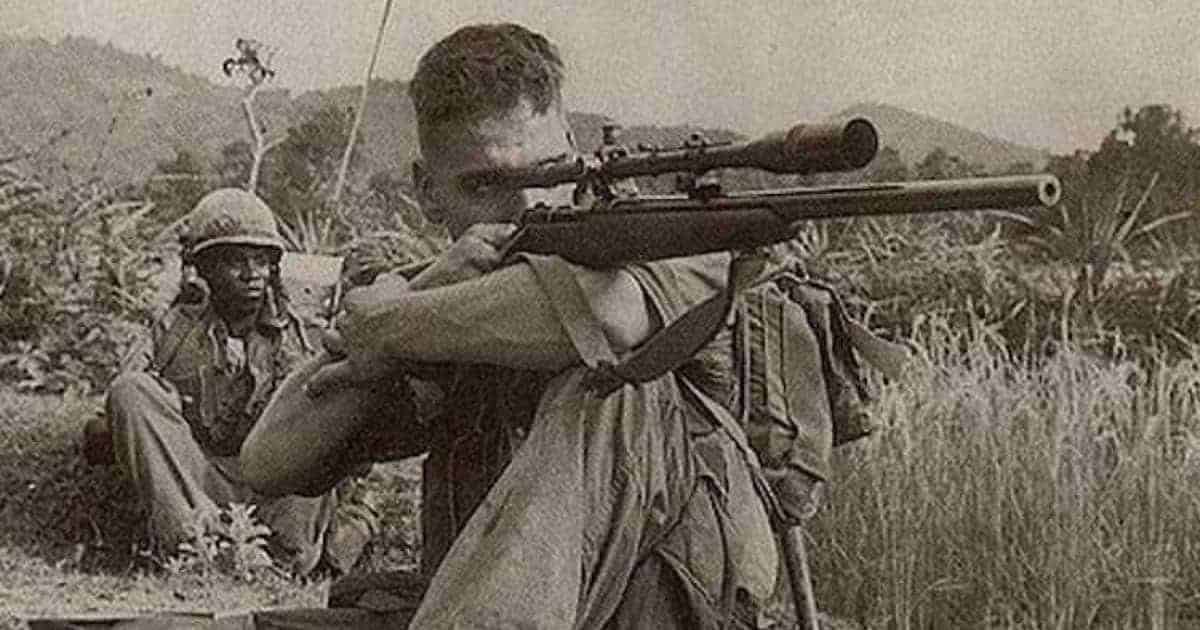Who is Carlos Hathcock? Simply put, he is one of the Marine Corps’ most revered figures. Today, he is most famously known for holding the longest-distance kill record of any sniper for decades following the Vietnam War. Read on to find out more about where he came from, his stories, and what happened after his time in the Vietnam War ended. Ladies and gentlemen, Carlos Hathcock: ‘the man, the myth, the legend’.
Born in 1942 in Little Rock Arkansas, Carlos Hathcock II later became known as the “White Feather”. From a young child, Hathcock states he always dreamt of being a Marine. He frequently went out shooting with a .22-caliber J.C. Higgins single-shot rifle while visiting relatives in Mississippi. He said he enjoyed pretending to be a soldier fighting imaginary Japanese figures. Naturally in 1959, on his seventeenth birthday, Carlos thus enlisted in the United States Marine Corps.
In 1966, the military deployed Hathcock to Vietnam. He started as a military policeman but his platoon later raised him to the position of a sniper. During the war, as a sniper, Hathcock had ninety-three confirmed kills of Viet Cong and North Vietnamese Army personnel. In order to have your kills confirmed during this time, an officer had to be there to confirm the kill. Resultantly, because of the difficulty in achieving this, Hathcock himself estimates his kill figure to be closer to three or four-hundred enemy personnel.

While the North Vietnamese Army typically rewarded anywhere between eight dollars and two thousand dollars for capturing or killing US snipers, Carlos Hathcock was a different story. Owing to his success in killing so many of their men, the North Vietnamese Army placed a thirty-thousand-dollar bounty on his head. Historians believe this bounty to be the highest number the Vietnamese ever offered for a single man.
In combat, Hathcock earned the nickname “White Feather”. The Vietcong and North Vietnamese Army called him this because of the white feather he wore on his bush hat to supposedly entice the North Vietnamese to spot him sooner. His legend was so renowned that other marines took it upon themselves to don white feathers in order to mislead the enemy. They suspected the impact of Hathcock’s death would be catastrophic for morale and thus sought to confuse counter-snipers.
Carlos Hathcock – and the stories he told – led him to become a legendary figure in the U.S. Marine Corps. By the end of the War, Carlos Hathcock ranked as Gunnery Sergeant of the first Marine Division unit. This is the seventh enlisted rank in the Marine Corps.


